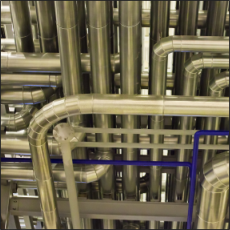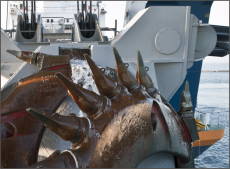Aggregate Primary Plant Automation
Aggregate Primary Plant Automation
Customer: Oldcastle – Shelly Division
Location: Columbus, OH
Description:
When the customer decided to expand their unautomated 1200 TPH primary plant to include a secondary recrush loop and additional product screening, they hired Kruse Controls, Inc. to design and implement a state of the art automation system.
Details:
The control portion of the automation system consisted of a main PLC processor and two remote I/O locations communicating with each other via a fiber-optic network. Remote I/O was utilized to reduce field installation costs and fiber-optic networking was used for electrical noise immunity.
A main HMI workstation replaced a hardwired pushbutton panel in the primary operator’s control room. From the HMI, the operator could monitor and control the entire plant, including primary and secondary crushers, all feeders, conveyors, screens and stackers.
In order to eliminate the paperwork load on the operator, four product scales and one main scale where interfaced to the PLC system for production data collection. Automatic downtime data was collected by triggering a downtime event whenever the primary feeder stopped or crusher production dropped below a threshold.
Production and downtime data was stored in a database server located in the plant office. Networking to the database was accomplished via a wireless Ethernet network.
Reports for production and downtime were created to be viewed with a standard web browser. Anyone with an Internet connection and authorized network access could view the reports.
Post-startup support was enhanced by configuring remote access for the system. Via a router mapping of a “real-world” I.P. address and Microsoft’s Remote Desktop Connection client, Kruse Controls, Inc. can access all computers and PLCs for maintenance and troubleshooting from any Internet access point.
Points of Interest
- Automatic primary feeder control based on conveyor and crusher motor amperages maximizes production and relieves operator of continuous feeder adjustments
- Constant monitoring by automation system provides safer and more reliable operation
- Graphical operator interface helps new operators run the plant with minimal training
- Automatic production and downtime data collection provides more accurate data than the old manual worksheet logging system performed by the operator
Web-based reporting provides management flexible and constant access to production and downtime information.












